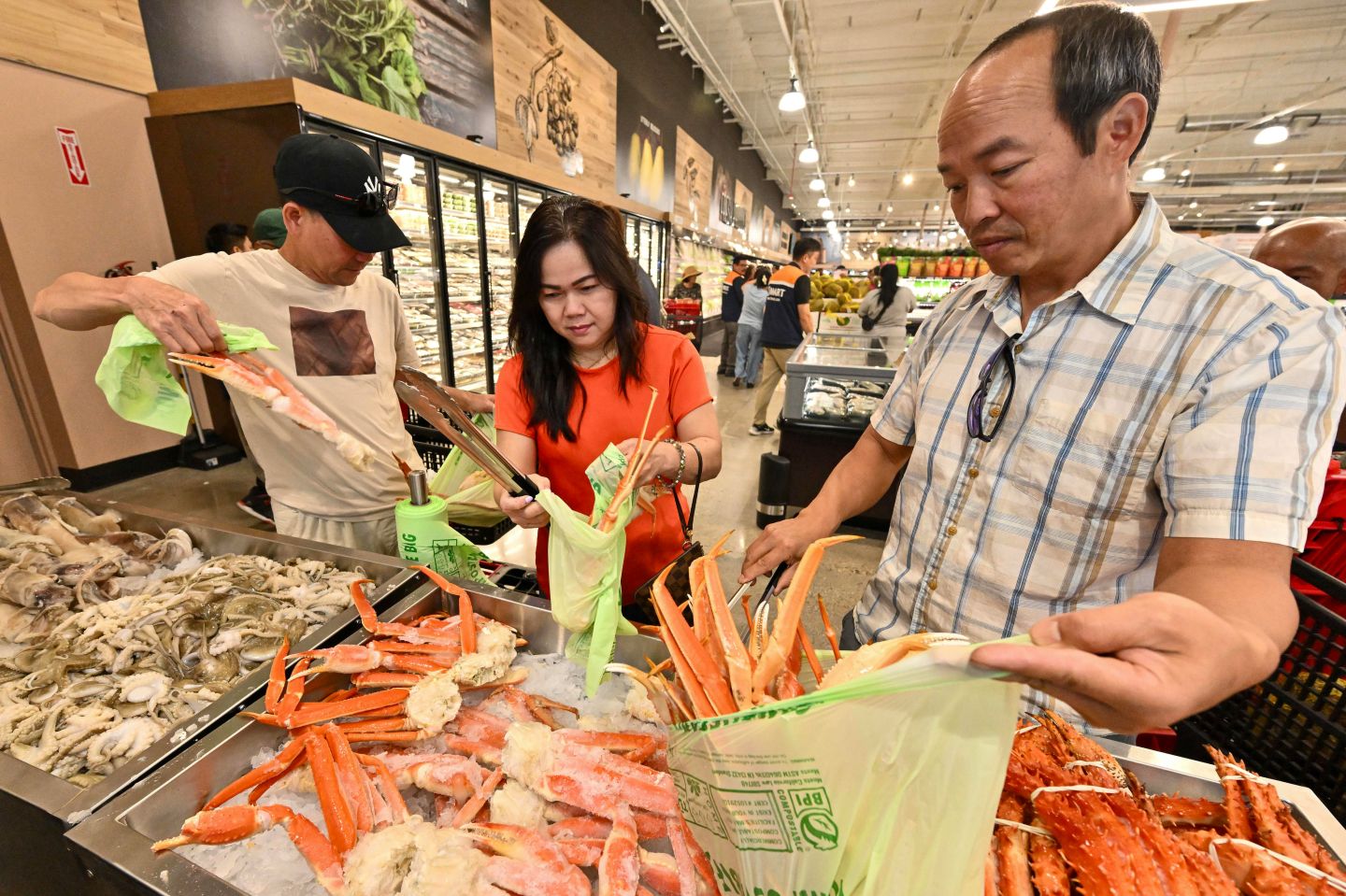On the face of it, any retailer’s report of a monthly sales jump of 12% in this environment should be a source of relief for the beleaguered industry.
But peer into Costco Wholesale’s March revenue numbers more closely, and you will see signs that even the most successful chains could be in for a hard time now, with many new restrictions put in place to curb the spread of the coronavirus at the nation’s stores.
The warehouse operator, the second largest U.S. retailer after Walmart and a consumer spending bellwether, reported on Wednesday that comparable sales, a metric that strips out the impact of stores opened or closed in the last year, had risen 12.1% in the United States in March, excluding the impact of changes in gas prices.
That unusually high increase should come as no surprise to anyone who saw scenes on national television of Americans stocking up on food, toilet paper, cleaning products, computers, and home goods in early March in fear of shortages of staples.
But Wall Street analysts had expected Costco to report a 24% increase in U.S. comparable sales, according to Consensus Metrix. And it’s easy to see why they were so optimistic: Target on March 25 said its comparable sales had risen 20% for the month at that point, while the Wall Street Journal last week reported Walmart had seen a similar jump, citing confidential documents.
Costco said that in mid-March, things changed after it took steps to reduce the risk of contamination for shoppers and workers. Those steps included limiting the number of people allowed in the store, reducing service at its food court—including handing out samples, one of the most popular features of a visit to Costco—and closing areas like its optical and hearing departments altogether.
“These developments slowed sales compared to the first half of March,” David Sherwood, a member of Costco’s investor relations unit, said on a conference call. Sherwood told Fortune that the limit of customers in a store at any given time had been 1,000 people, depending on the store, and that has been reduced even further.
In the last week, one big retailer after the other has announced similar limits to the ones that dented Costco’s business in the second half of March. Walmart said it would limit the number of shoppers in a store to 20% of capacity, while Target will meter the number of people who can be in a store, something Walgreens has been doing for a while.
Kroger, Aldi, and other grocers are taking similar steps. Those include one-way shopping aisles, which make the flow of customers more efficient but will cost retailers sales if, say, someone forgot to pick up some spaghetti sauce when they walked passed that shelf earlier, and now it’s too hard to go back.
What’s more, a big factor in the March sales jumps has been stock-up trips for food and essentials in fear of shortages, concerns that are now abating as retailers reassure customers about product availability. As Walmart’s executive vice president of corporate affairs put it a few days ago: “Our supply chain is getting used to this new normal.”
And in a worrisome development for a whole slew of retailers, Costco said that comparable sales of so-called “hardline” goods, which includes electronics and appliances, had fallen, as had those of tires and sporting goods.
Home Depot and Lowe’s, entering their busiest periods of the year, could be facing dampened demand for appliances. Home Depot is also limiting installation appointments. Best Buy, which enjoyed an initial surge in sales in early March as people snapped up computers, iPads, and other electronics ahead of a potentially long quarantine, no longer lets people inside stores, something likely to hurt sales. The retailer does allow curbside pickup of online orders.
Some retailers like Best Buy and Target, despite seeing a boost in sales early on in the pandemic and being among the essential retailers allowed to stay open, were quick to announce steps to conserve cash last month and withdraw financial forecasts, in acknowledgement of how volatile the situation has been for these big chains.
What’s becoming clear is that even retailers able to operate stores these days because they are deemed essential won’t escape the coronavirus’ bite into their sales.
More must-read retail coverage from Fortune:
—Coronavirus will pummel already weak retailers long after it’s been contained
—Liquor brands are sponsoring relief programs for bar and restaurant industry workers
—Cannabis companies get a big bump in sales and not just from the wake-and-bake set
—Levi’s focuses on keeping customers’ attention online while stores are closed
—Listen to Leadership Next, a Fortune podcast examining the evolving role of CEO
—WATCH: The greatest designs of modern times
Follow Fortune on Flipboard to stay up-to-date on the latest news and analysis.












